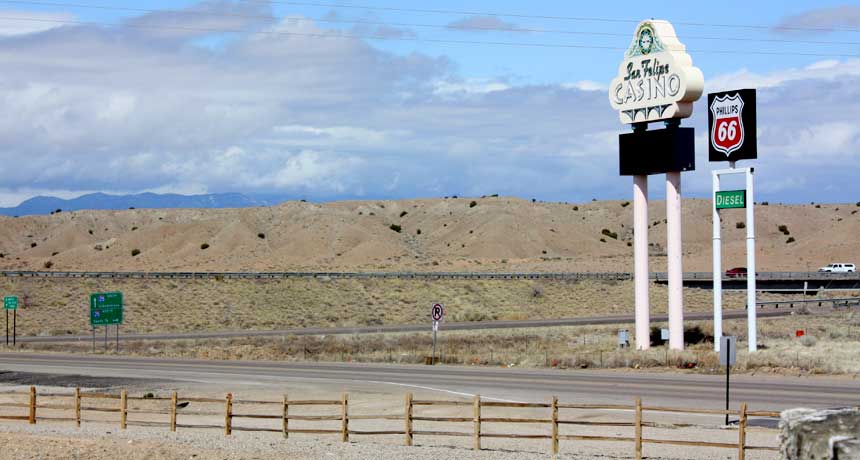Casinos may reduce poverty, obesity in Native American communities
Modest reduction in overweight youth seen after addition of slot machines

GOOD BET? Income gains from a new or expanded casino might go hand in hand with improved body weight in Native American children, a study finds.
PatrickRohe/Flickr
Building a new casino on American Indian tribal land, or expanding an existing one, coincides with higher income and slightly lower rates of being overweight or obese in Native American children living nearby, researchers report in the March 5 JAMA.
Native Americans are more likely to be overweight or obese than their white non-Hispanic counterparts. Those living on tribal lands also face high rates of poverty. To find out whether an injection of legalized gambling affects these problems, researchers used census data to measure income changes in American Indians living near casinos and tapped school health assessments that included body mass measurements of American Indian children before and after casino development.
The study spanned 117 school districts in California, 57 of which experienced a casino opening or expansion between 2001 and 2012. In 24 others, a casino was in operation but didn’t expand, while 36 districts had no casino. The districts all included some American Indian students, with a median of 12 in each.
The researchers calculated the effect of each new slot machine on Native American income and on child body mass index, or BMI — a measure of weight that accounts for height.
On average, an expanded or new casino added 13 slot machines per person in the local tribal community. Per capita annual income rose by $541 per slot machine added. That suggests that a tribal member living near a casino that added the average number of slots would have seen annual income grow by an additional $7,033 over that span beyond tribes not opening or expanding casinos.
In the school districts, the researchers found that 48 percent of Native American children ages 7 to 18 were overweight or obese, higher than the national rate of roughly 30 percent. Being overweight or obese means the child was at the 85th percentile or higher in BMI. After a casino arrival or expansion, the researchers estimated, the fraction of kids with BMI in this overweight or obese category would go down by about 2.5 percentage points, on average.
“This is a really important contribution to this field of study,” says Daniel Hruschka, an epidemiologist and anthropologist at Arizona State University in Tempe. But he notes that the numbers reveal only “a moderate improvement” in BMI despite a considerable increase in incomes.
Study coauthor Jessica Jones-Smith, an epidemiologist at Johns Hopkins University, acknowledges that the data don’t delineate how the influx of income was used. But she and her coauthors were “surprised and happy” with the effect on high BMI, even though she acknowledges the change was “smallish.”
Mollie Grow, a pediatrician and researcher at the University of Washington in Seattle, views this study population as “a microcosm setting in which we’re seeing an effect on poverty and on obesity in youth.” But, she says, building casinos to prompt economic growth isn’t an option for much of the general public.
It’s unclear whether the benefits found in this study would show up with other forms of economic stimulus, Jones-Smith says. “These are hopeful findings,” she says. “There are certain pieces of this that are generalizable, but other things about casinos on tribal land are different from other economic development.”







